Contents
- Purpose of feeding cherries in spring
- Dates of spring top dressing of cherries
- How to fertilize cherries in spring
- Scheme of feeding cherries in spring for good fruiting
- Features of feeding cherries in the spring in the Moscow region and regions
- Do I need to feed cherries in summer
- Rules for spring top dressing of cherries in spring
- Cherry care after top dressing in spring and summer
- Conclusion
Fertilizers containing nitrogen in their composition are of great importance for fruit trees and shrubs, including cherries. Thanks to this chemical element, there is an active growth of annual shoots, on which, basically, fruits ripen. You can feed cherries in the spring so that they bear fruit and grow actively, you can use various nitrogen mineral fertilizers, as well as other means.
Purpose of feeding cherries in spring
Cherry comes into vegetation earlier than many other garden trees. Already in early spring, as soon as the earth thaws, buds begin to swell on it. At this time, it is very important that the trees receive good nutrition.

Spring top dressing of cherries is an important stage in the care cycle
This will allow them to quickly recover from a long winter, strengthen their immunity, and also increase their resistance to return frosts, if any.
What can and can not fertilize cherries
To feed cherries in the spring, you can use various complex mineral fertilizers produced industrially. You can buy them in specialized stores for gardeners. Here are some of the commercially available fertilizers for top dressing cherries in the spring.
- Urea.
- potassium sulfate.
- Superphosphate (simple, double).
- Nitroammophoska (Azophoska).
- Ammonium nitrate.
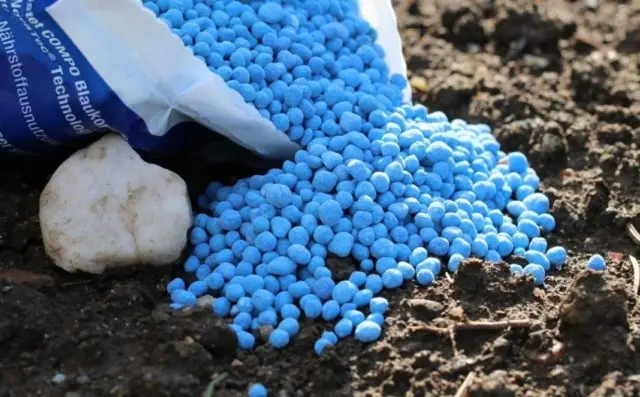
Mineral fertilizers contain nutrients in a concentrated form
In the absence of industrial mineral fertilizers, you can use various folk remedies that increase soil fertility. These include the following compositions.
- Wood ash.
- Infusion of mullein.
- Eggshell.
- Manure.
- Compost.
- Sawdust.
- Joy.
- Yeast.
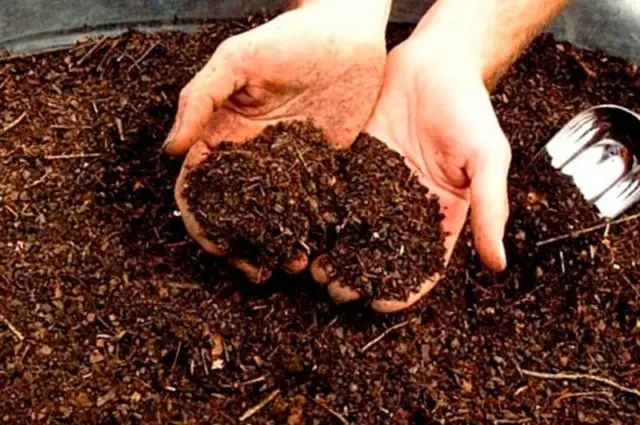
Organic fertilizers are effective and safe
Contraindicated for feeding cherries in early spring – undiluted chicken manure, as well as fresh manure and slurry. Nitrogen fertilizers should be used with caution when there is a high probability of returning frosts, since shoots that have started to grow are vulnerable and can be damaged by frost.
Dates of spring top dressing of cherries
Feeding cherry trees in the spring has its own characteristics. As a rule, it is carried out in several stages. Calendar dates may vary by region due to climate characteristics, so gardeners are guided by certain stages of tree vegetation. Here are the main stages of such top dressing.
- Early spring, the beginning of the growing season.
- Before flowering.
- During the flowering period.
- 12-14 days after the previous feeding.
How to fertilize cherries in spring
The amount and composition of fertilizers used during spring feeding depend on the age of the trees and the growing season, as well as the composition of the soil. It is important to pay attention to this moment.
How to fertilize cherries in the spring when planting
When planting a seedling, quite a lot of various fertilizers are laid in the planting pit. This measure provides the young tree with a constant source of nutrition necessary for rapid growth and development. During planting, the following fertilizers are used (based on 1 planting hole):
- Humus (15 kg).
- Superphosphate, simple or double (respectively 1,5 or 2 tablespoons).
- Sulfate of potassium (1 st. l).
If the soil in the area is acidic, then dolomite flour or lime is additionally added. It is also advisable to add a pound of wood ash to the planting pits. This will not only reduce acidity, but also enrich the soil with potassium.
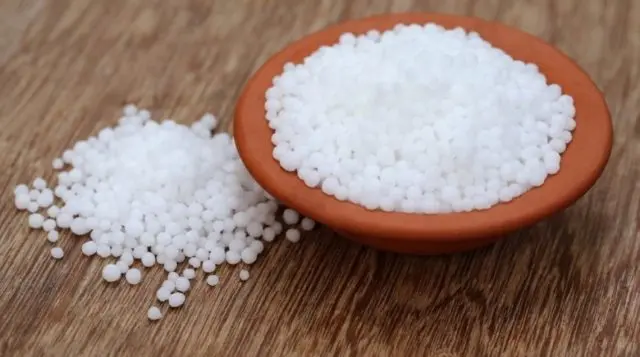
Carbamide is an effective nitrogen fertilizer
Planting cherries in most regions is done in the spring, before the start of the growing season. Therefore, it is advisable to additionally add a small amount of nitrogen fertilizer to the planting pit, for example, 1,5-2 tbsp. l. carbamide (urea). If planting is done in the fall (which is quite possible in the southern regions), then no nitrogen-containing fertilizers should be added to the planting pit.
How to feed young cherries in spring
Fertilizers should not be applied within 2 years after planting. The volume of fertilizers that were laid into the soil during planting is quite enough for a young tree for this period. If top dressing when planting seedlings was not laid in full, then they should be started from the age of 2 years. Up to 4 years, the cherry is considered young, at this time its intensive growth takes place, the frame of the tree is laid. Feeding during this period is very important. In spring, cherries of this age are fed in May, before flowering, in one of two ways:
- Root. Dry ammonium nitrate or dissolved in water is used, which is scattered in the root zone, spending about 20 g per 1 sq. m., or apply fertilizer in the form of a solution, irrigating the root zone.
- Foliar. Trees are sprayed with an aqueous solution of urea (20-30 g per 10 liters of water).
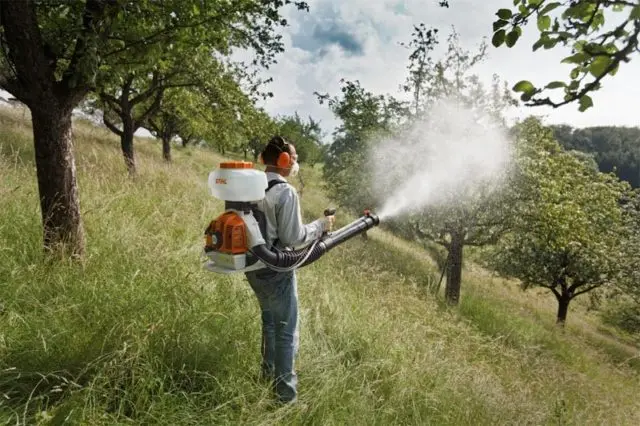
Top dressing is very effective
How to feed an adult cherry in spring
An adult fruit-bearing cherry absorbs nutrients from the soil more intensively, therefore, it needs more fertilizer in spring. Top dressing of trees older than 4 years is carried out in several stages. At this time, both complex mineral fertilizers (ammonium nitrate, carbamide, superphosphate, potassium salt) and other means (mullein infusion, wood ash) are used.
Top dressing of old cherries in spring
Old cherries do not require enhanced shoot formation and accelerated growth of green mass. Trees receive the main nutrients from organic matter, which is introduced into the near-stem circle in the second half of the season. In the spring, it is enough 1 time, before flowering, to feed the cherries with urea, bringing it in dry or dissolved form to the root zone. Each tree requires 0,25-0,3 kg of this fertilizer.
How to feed cherries in the spring so that they do not crumble
The shedding of ovaries and fruits depends not only on top dressing, but also on other factors, such as the characteristics of the variety, the friendliness of the ripening of the crop, timely and high-quality watering, the appearance of diseases or pests on the trees. Premature flight of fruit ovaries can be triggered by a lack of nutrition in the event that top dressing was not applied in full or was absent at all. If all the recommendations are followed, then the reason for the fall of fruit ovaries or premature shedding of berries must be sought elsewhere.
How to fertilize cherries in spring for a better harvest
Flower buds, which in the future will become flowers and then fruits, are laid in cherries in the previous year. Therefore, in order to increase the yield, it is necessary that the plant lay as many of them as possible in the fall. This process is stimulated by the application of fertilizers, but this is not done in spring, but at the end of summer. Spring top dressing is more likely to preserve the future harvest, prevent premature shedding of ovaries and fruits. It is for this purpose that cherries are fed with superphosphate and potash fertilizers after flowering.
You can increase the number of fruits if you attract as many pollinating insects to the tree as possible. For this purpose, during flowering, cherries are sprayed with honey water (1 tablespoon of honey per 1 bucket of water), which is a kind of top dressing for bees.
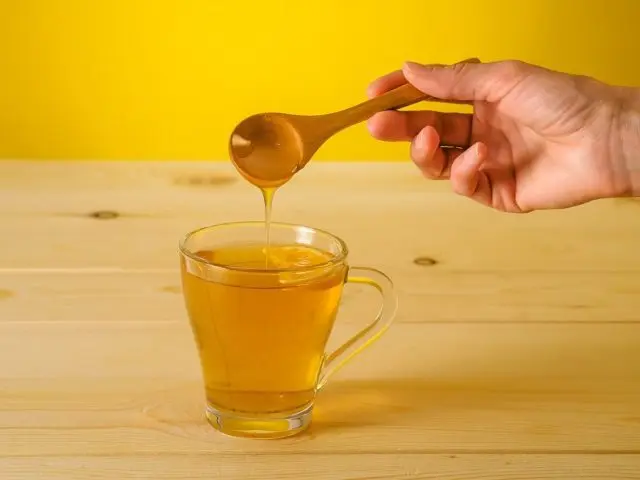
Honey will attract more pollinating insects to cherries
Scheme of feeding cherries in spring for good fruiting
In order to provide a fruit-bearing tree with a whole set of nutrients and trace elements, it is recommended to carry out top dressing in several stages. The first of them is aimed at the rapid restoration of the tree after hibernation and the growth of green mass, the second stage is designed for the most effective fruit set, and the third is to strengthen the tree and preserve the ripening crop.
How to feed cherries in the spring before flowering
At the very beginning of the season, even before the start of the growing season, the trees are sprayed with a solution of Bordeaux liquid (copper sulfate + lime) to combat fungal diseases and pests, as well as foliar top dressing containing such important trace elements as calcium and copper.
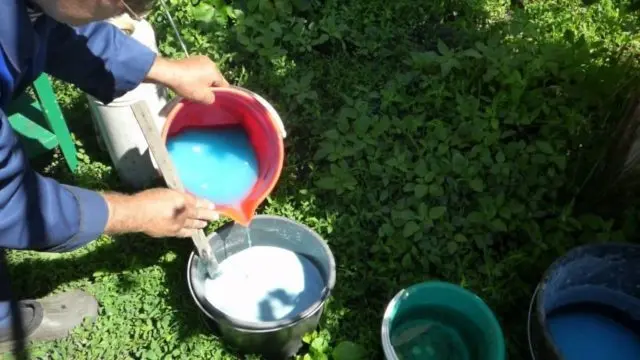
Spraying with Bordeaux liquid – a means of preventing fungal diseases and top dressing with microelements
The second stage, before the beginning of the flowering period, foliar treatment is carried out with an aqueous solution of urea (20-30 g of fertilizer per bucket of water) or ammonium nitrate is introduced into the root zone (2 tablespoons per 1 sq. M).
How to feed cherries during flowering
To feed cherries in the spring during flowering, it is recommended to prepare the following composition. Dilute 10 liter of mullein and a pound of ash in 1 liters of water. Moisten the root zone evenly with the solution. If the age of the cherry is 7 years or more, the amount of all ingredients used to feed the cherry in the spring during flowering must be doubled.
How to feed cherries after flowering
After 12-14 days, the cherries are fed again. 1 st. l. potassium salt and 1,5 tbsp. l. superphosphate is diluted in 1 bucket of water and applied to the root zone.
Features of feeding cherries in the spring in the Moscow region and regions
Spring feeding schemes, their composition and norms in the Moscow region and in other regions of Our Country (in Siberia, the Urals, the Far East) will not have cardinal differences. The main difference will be only in the timing of the work. In any case, you need to navigate by the peculiarities of the climate of your region and the stages of the plant’s vegetation (swelling of the buds, the beginning and end of flowering, pouring fruits, etc.), and not by the dates on the calendar.
A short video about feeding cherries can be viewed at the link:
Do I need to feed cherries in summer
By the end of summer, even the latest varieties of cherries finish fruiting. Fruiting, and especially plentiful, greatly weakens the trees. It is very important at this time to help them recover faster, as well as stimulate the formation of flower buds. It is on their number that the yield of the tree in the next calendar year depends.
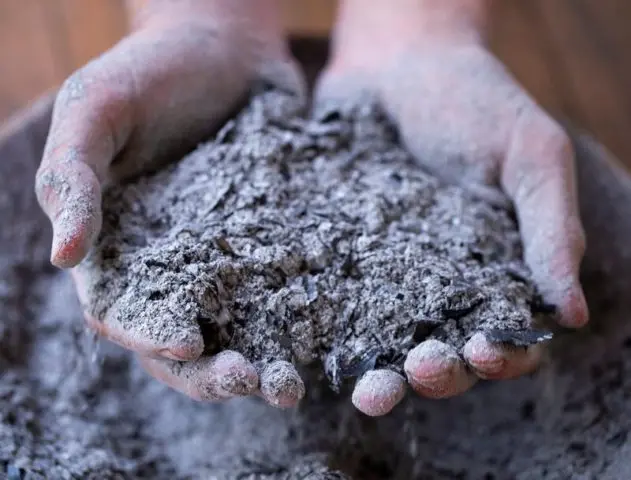
Wood ash deoxidizes the soil and enriches it with potassium
In summer, young trees (under 4 years old), as a rule, do not feed. They do not yet have abundant fruiting, so it will be enough to feed them in the fall to strengthen them before wintering. Adult fruit-bearing trees are fed in 2 stages in summer:
- Early summer. Azofoska or an analogue is used (25 g per 1 bucket of water), the solution of which is evenly applied to the near-trunk circle.
- End of summer, after fruiting. Superphosphate is used (25-30 g per 1 bucket of water), and 0,5 liters of ash must also be added. All this is also evenly applied to the root zone, after which abundant watering is carried out.
Rules for spring top dressing of cherries in spring
There is nothing difficult in feeding cherry trees, but there are some points that you should pay attention to. Here are some tips to help you save time, increase work efficiency and avoid unnecessary problems:
- Do not get carried away with fertilization and increase the dose of one or another component. Too much is often more harmful than too little.
- An increased concentration of fertilizers during foliar feeding can provoke chemical burns of plant tissues.
- All root bait should be done on damp ground or after pre-watering.
- Foliar top dressing of cherries in spring and summer is better to wish in dry weather, in the evening, so that the sun does not have time to dry the solution and microelements have time to absorb into the tree tissues as much as possible.
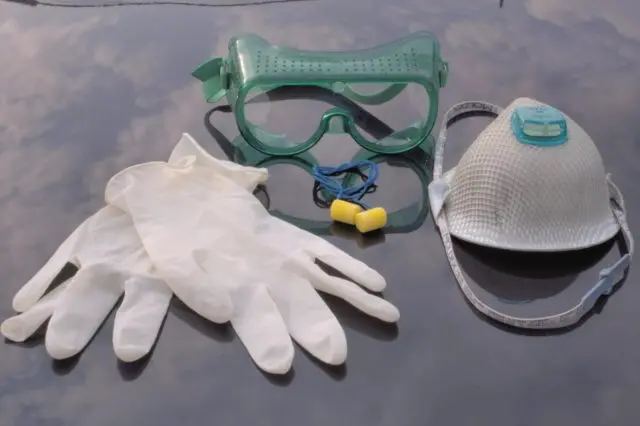
PPE – gardening assistants
Cherry care after top dressing in spring and summer
After spring and summer top dressing, plantings do not require any special measures. It is only necessary to carefully observe what result is achieved in the case of the use of certain fertilizers and take corrective actions in time. After root dressings made by the dry method, regular watering is necessary, otherwise the granules will remain in the soil in an undissolved form. The trunk circle must be cleaned of weeds and mulched with peat or humus.
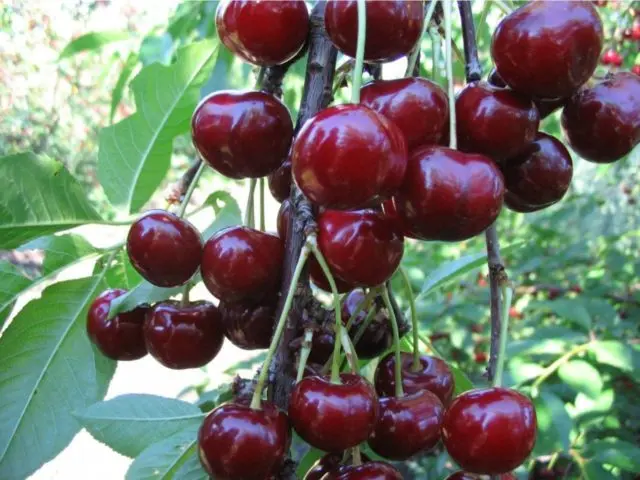
A good cherry harvest directly depends on top dressing
Conclusion
You can feed the cherry in the spring so that it bears fruit and does not hurt, in different ways and means. Not all gardeners consider it acceptable to use mineral fertilizers on the site, but they can be replaced with organic matter and some other folk remedies. It is important that top dressing is applied on time and regularly, this will not only ensure stable annual fruiting, but also strengthen the plant’s immunity, increase its resistance to diseases and pests.









